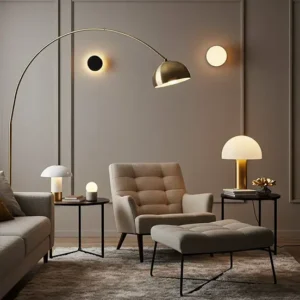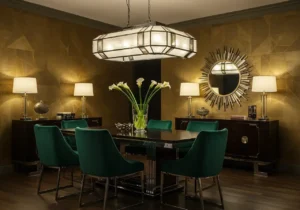Creating a traditional dining room is something I absolutely adore. There’s just something about these spaces that feels so warm, so classic, and so perfect for bringing people together. They aren’t just rooms; they’re settings for cherished conversations, laughter, and those unforgettable meals we share with loved ones. If you’ve been dreaming of a dining space that whispers elegance and tradition, you’re in the right place. I’m going to walk you through some of my favorite ways to achieve that timeless style, perfect for hosting formal gatherings that everyone will remember. I’ve picked up a few tricks over the years that I’m excited to share with you, covering everything from the foundational pieces to the smallest detail.
Selecting a traditional dining room table shape
The dining table is truly the heart of your traditional dining room. It sets the stage for everything else. Choosing the right shape is more than just about fitting the room; it’s about how it feels when you gather around it. I’ve found that classic shapes like rectangles, ovals, and sometimes even a well-placed round table work beautifully in traditional settings, creating a sense of structure and formality.
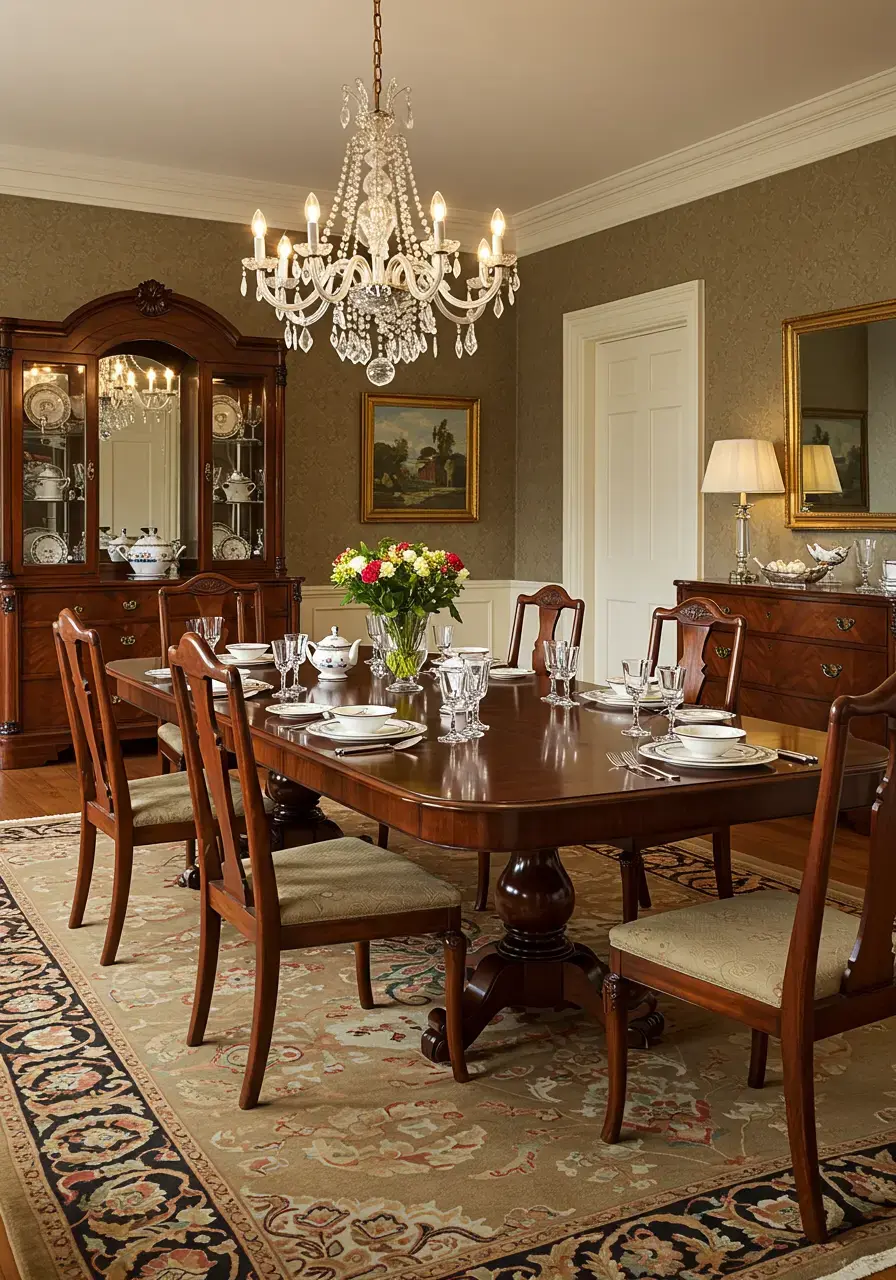
Why This Works:
A classic table shape reinforces the traditional feel of the room and provides ample space for setting a beautiful table and hosting guests comfortably.
How You Can Recreate It:
- Consider a rectangular mahogany or cherry wood table for a formal look.
- An oval table can soften the edges and still accommodate a good number of people.
- Ensure the table size is proportionate to your room dimensions, leaving plenty of space to move around.
Choosing the right Traditional dining room chairs
Oh, the chairs! They are just as important as the table. Traditional dining room chairs shouldn’t just be functional; they should add to the room’s aesthetic. Upholstered chairs in rich fabrics, carved details, and sturdy frames all contribute to that timeless traditional feel. I remember once finding a set of vintage carved oak chairs that, with a little upholstery work, completely transformed a client’s dining room.
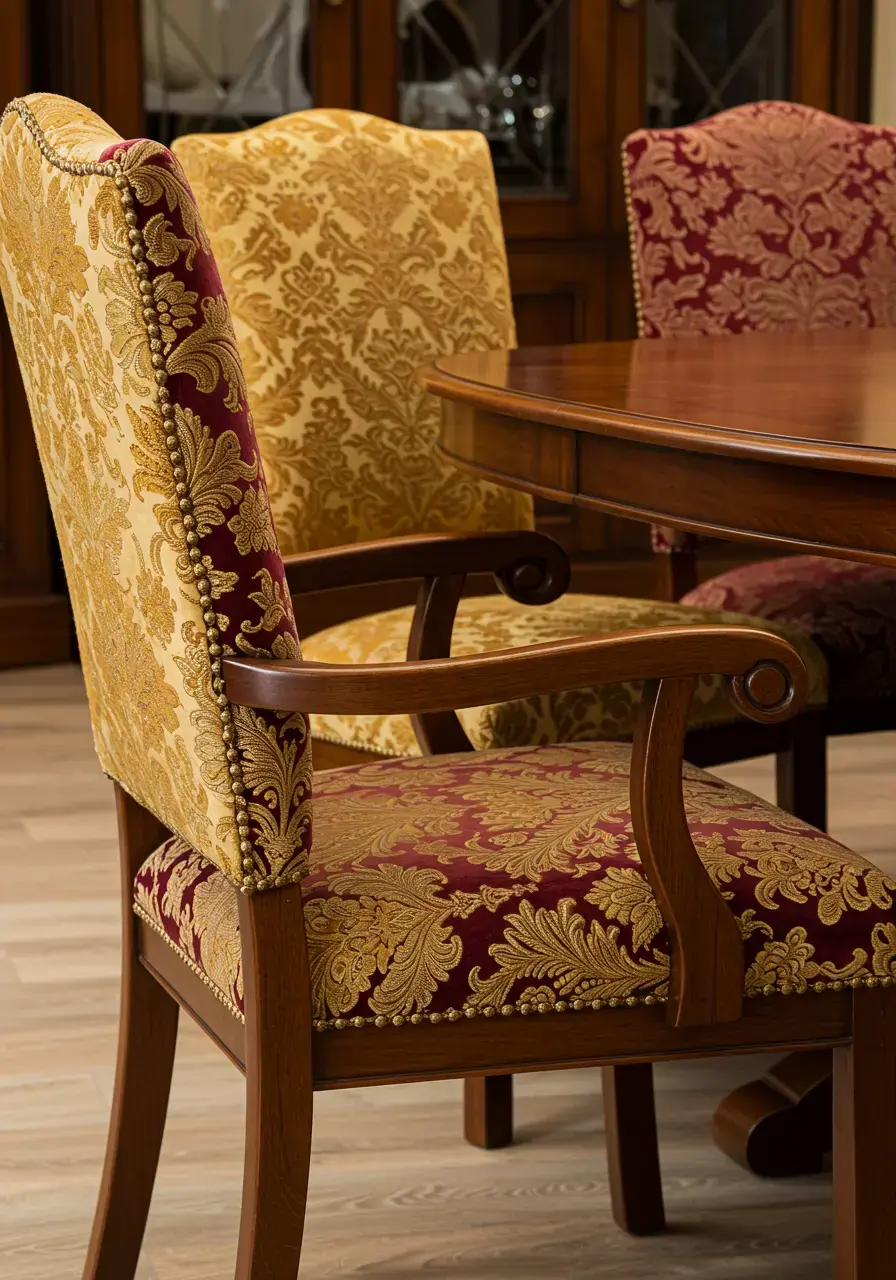
Why This Works:
Comfortable and appropriately styled chairs enhance the dining experience and complement the traditional table, creating a cohesive look.
How You Can Recreate It:
- Look for chairs with solid wood frames and upholstered seats or backs.
- Consider fabrics like velvet, damask, or brocade in classic colors.
- Make sure the chair height and width are comfortable for your table and guests.
Ambient lighting ideas for your dining space
Lighting is everything in a dining room, especially a traditional one. It’s not just about seeing your food; it’s about creating a mood. I love using layers of light to make the space feel warm and inviting. A beautiful chandelier is a must, but don’t forget about dimmable wall sconces or even lamps on a buffet to add depth and ambiance.

Why This Works:
Layered, adjustable lighting allows you to control the mood and create a warm, intimate atmosphere for formal gatherings.
How You Can Recreate It:
- Install a dimmer switch on your main overhead light source like a chandelier.
- Add wall sconces with soft bulbs for ambient light.
- Place small table lamps on a buffet or side table for additional warmth.
Adding a Buffet or Sideboard to traditional dining room
A buffet or sideboard is a game changer in a traditional dining room. Not only does it provide valuable storage for linens, serveware, and silverware, but it also offers a surface for displaying decor or serving food buffet-style during larger gatherings. I consider it a non-negotiable piece in a well-appointed traditional space.
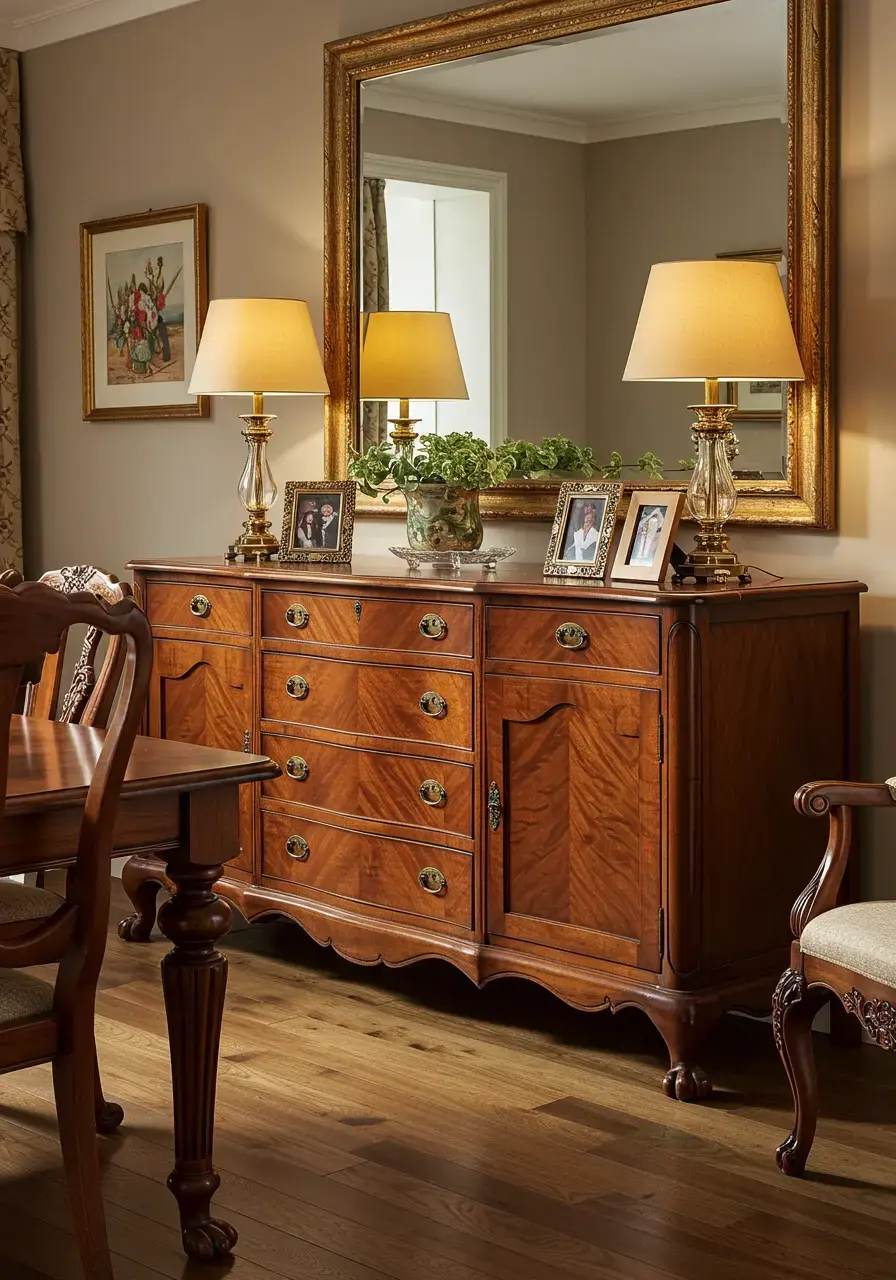
Why This Works:
A buffet or sideboard adds both functionality (storage and serving space) and visual interest, enhancing the traditional feel of the room.
How You Can Recreate It:
- Choose a piece in a wood finish that complements your dining table and chairs.
- Look for details like carved legs, ornate hardware, or glass-front cabinets.
- Style the top with lamps, decorative objects, or a beautiful mirror or piece of art above it.
Using area rugs in a traditional dining room
An area rug can truly anchor your dining space and add a layer of warmth and sophistication. In a traditional dining room, I leaning towards classic patterns like Oriental, Persian, or even a subtle damask. It defines the dining area within a larger open concept or adds a cozy feel to a distinct room.
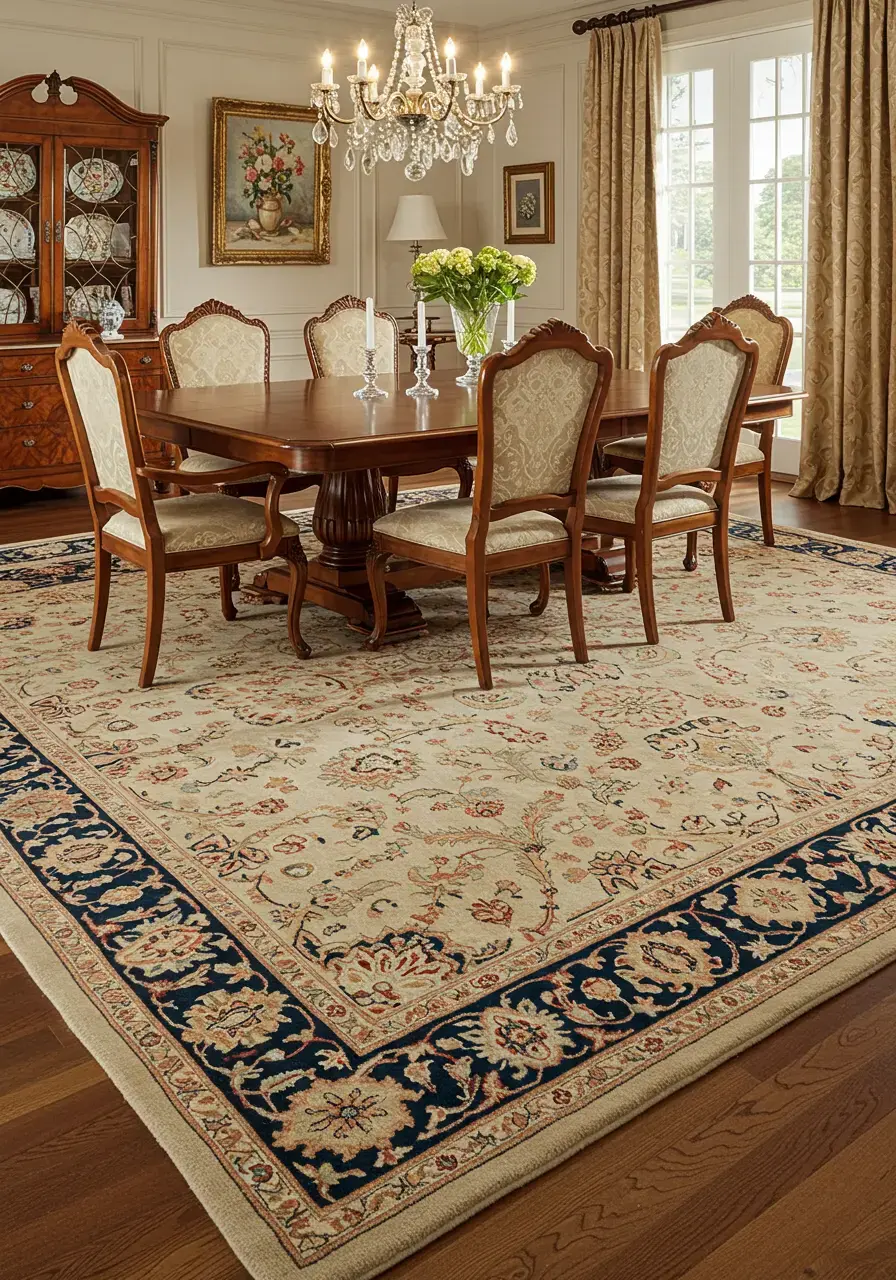
Why This Works:
An area rug defines the dining area, adds softness and sound absorption, and introduces color and pattern to the space.
How You Can Recreate It:
- Select a rug large enough so that all chairs remain on the rug even when pulled out.
- Choose a pattern and color palette that complements your furniture and decor.
- Consider materials like wool for durability and a luxurious feel.
Decorating walls in your traditional dining room
The walls are like a canvas in your traditional dining room. They are an opportunity to add personality and depth. I love using warm, inviting paint colors or even classic wallpaper patterns. Framing artwork, hanging mirrors, or adding architectural molding can also elevate the space significantly. I helped a client paint her dining room a deep, historical green once, and coupled with some beautiful framed botanical prints, it felt instantly more traditional and elegant.
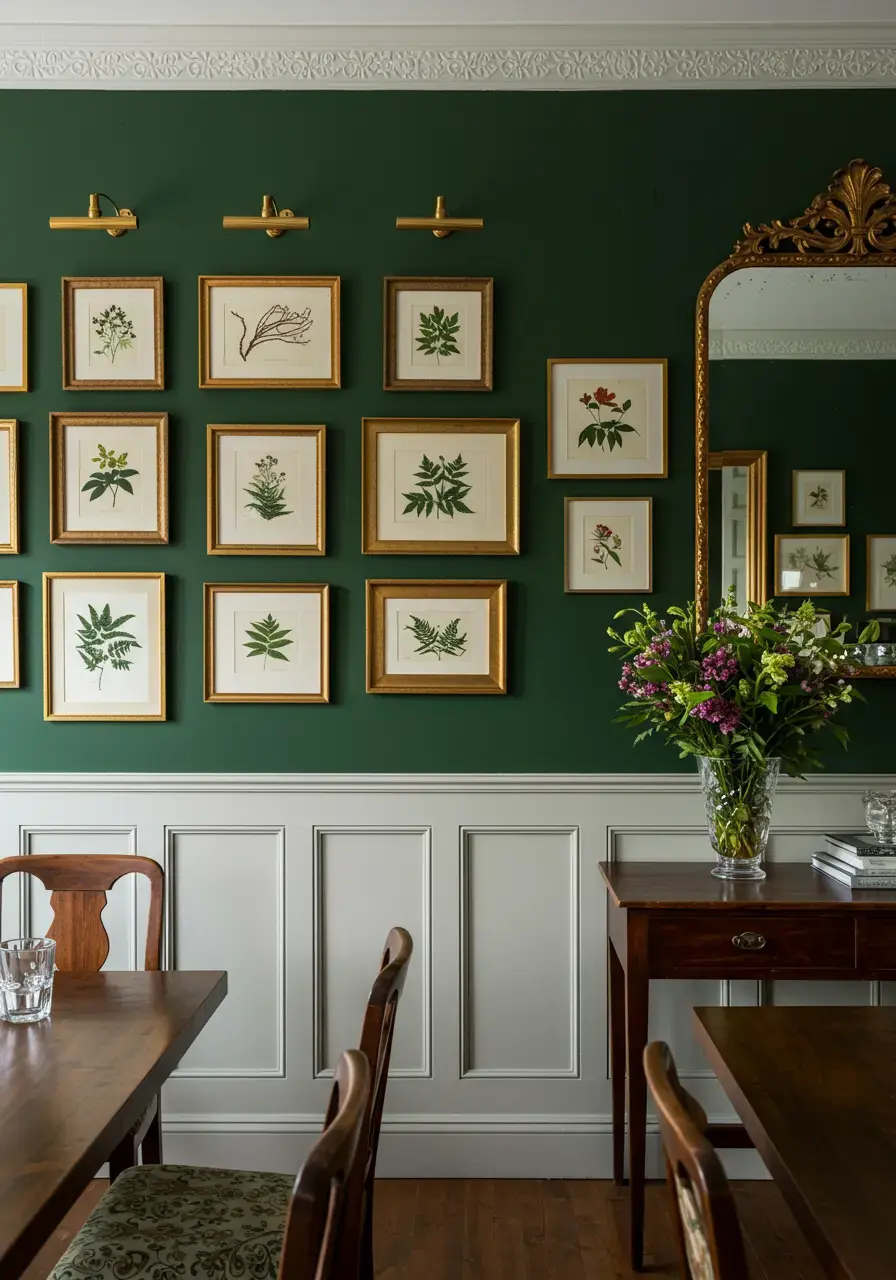
Why This Works:
Well-decorated walls enhance the room’s style, add visual interest, and create a cohesive backdrop for your furniture and decor.
How You Can Recreate It:
- Paint the walls in a rich, traditional color like deep red, navy, or forest green.
- Consider adding wainscoting or crown molding for architectural detail.
- Hang framed artwork, portraits, or decorative mirrors.
Incorporating formal dinnerware displays
If you have beautiful china or formal dinnerware, display it! A traditional dining room begs for these kinds of details. A china cabinet, discussed later, is a perfect place, but you can also use open shelving on a buffet or even wall-mounted plate displays. It adds a touch of elegance and shows off your collection.
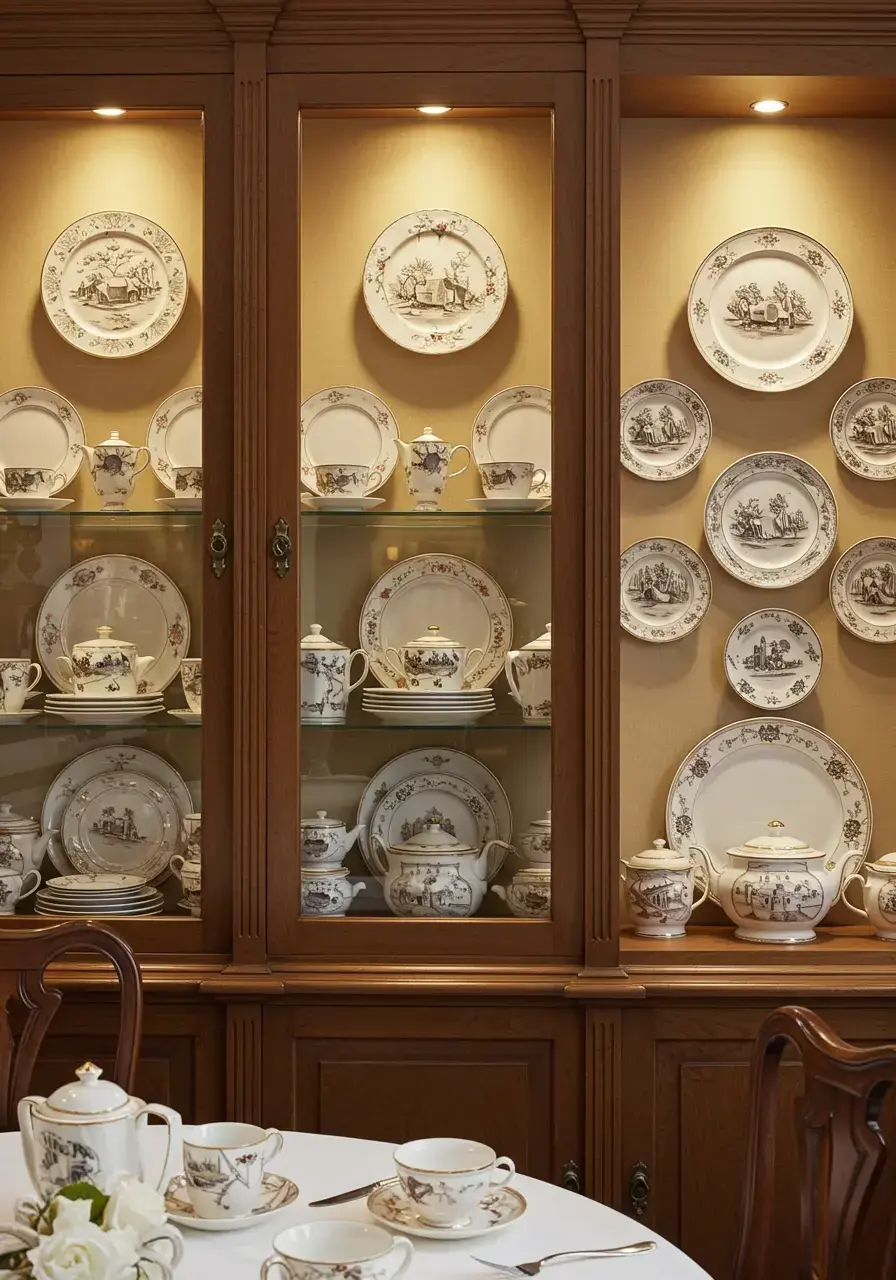
Why This Works:
Displaying formal dinnerware adds a touch of sophistication, showcases treasured items, and reinforces the room’s purpose for formal gatherings.
How You Can Recreate It:
- Arrange plates, teacups, and serving pieces neatly in a china cabinet or on shelves.
- Use plate stands to display decorative plates on a wall or surface.
- Ensure the display area is well-lit to highlight the pieces.
Selecting decorative accessories for table
The table itself is a key area for decoration, especially when not in use. A beautiful centerpiece is essential, but don’t stop there. Candlesticks, a decorative bowl, or a runner can add character. When I set a traditional table for a special occasion, I think about layers – the tablecloth, placemats, elegant napkins, and a thoughtfully arranged centerpiece.
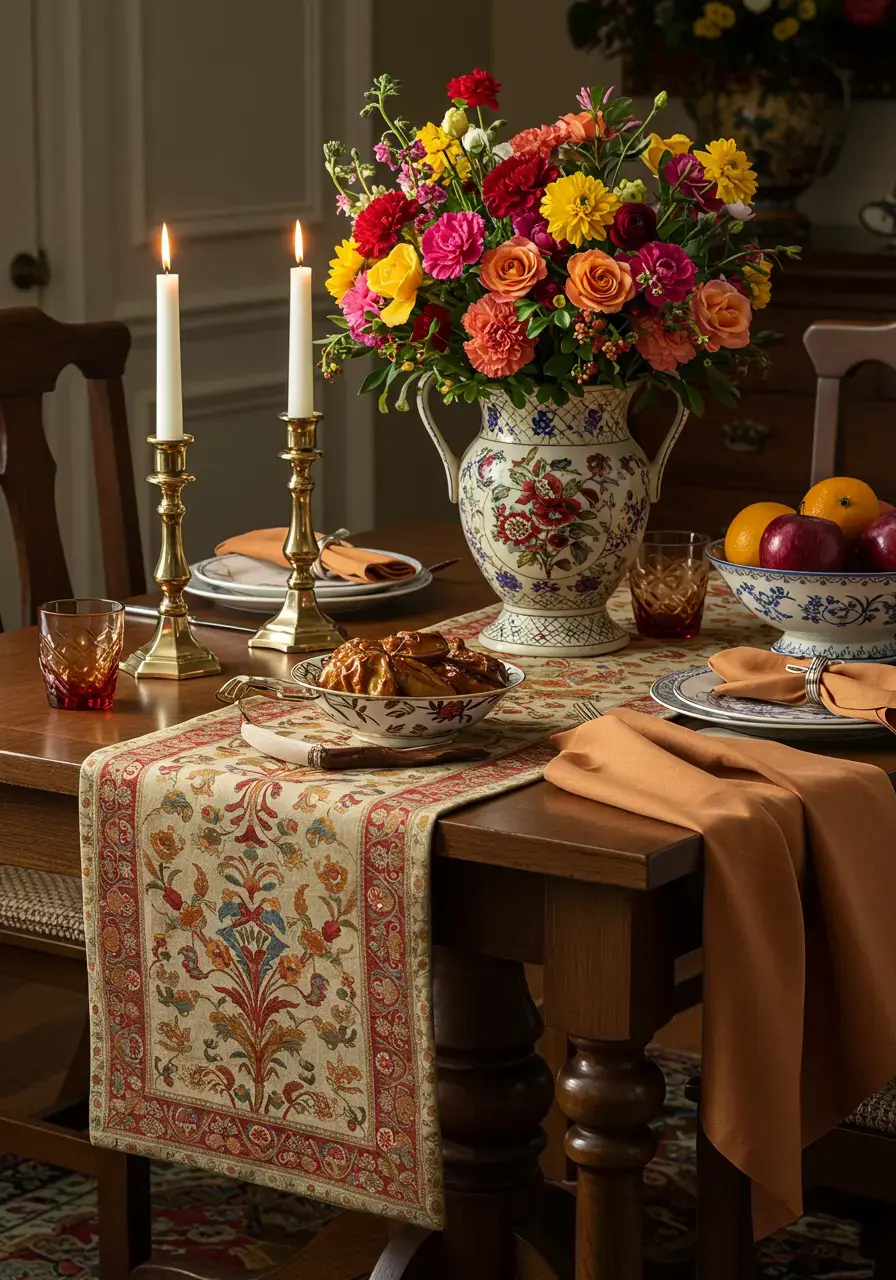
Why This Works:
Well-chosen table accessories add visual interest, serve as a focal point when the table isn’t set for a meal, and allow for seasonal or thematic changes.
How You Can Recreate It:
- Choose a classic centerpiece like a floral arrangement in a traditional vase or a collection of varying height candlesticks.
- Use a table runner or placemats in complementary colors and textures.
- Add a decorative bowl filled with fruit or ornaments.
Traditional dining room color palette suggestions
Color truly sets the mood in a traditional dining room. I often gravitate towards rich, deep hues or classic, muted tones. Think jewel tones like emerald green or sapphire blue, warm browns, deep reds, or sophisticated neutrals like cream and taupe. These colors create a feeling of warmth, depth, and timelessness.

Why This Works:
A classic color palette creates a warm, inviting, and sophisticated atmosphere that is characteristic of traditional design.
How You Can Recreate It:
- Choose a main wall color from a traditional palette that complements your furniture’s wood tones.
- Incorporate accent colors through upholstery, rugs, and accessories.
- Consider using trim color to highlight architectural details.
Adding a Chandelier above your table
A chandelier just feels right above a traditional dining table. It’s often the most prominent decorative element and acts as a beautiful focal point. Think crystal, brass, or wrought iron with elegant details. The right chandelier adds sparkle and a touch of grandeur, completely transforming the space.

Why This Works:
A chandelier serves as a beautiful focal point, provides essential overhead lighting, and adds a touch of elegance and luxury to the traditional dining room.
How You Can Recreate It:
- Select a chandelier size that is appropriate for the size of your table and room.
- Choose a style that complements your other traditional elements (crystal for glamour, wrought iron for a more rustic tradtional feel).
- Ensure it’s hung at the correct height (typically 30-36 inches above the table).
Consider a built-in China Cabinet
A built-in china cabinet is the epitome of traditional dining room elegance. If you have the space and the opportunity, I highly recommend considering one. It provides incredible storage and a beautiful way to display your cherished dinnerware and glassware. It becomes a custom, integral part of the room’s architecture.
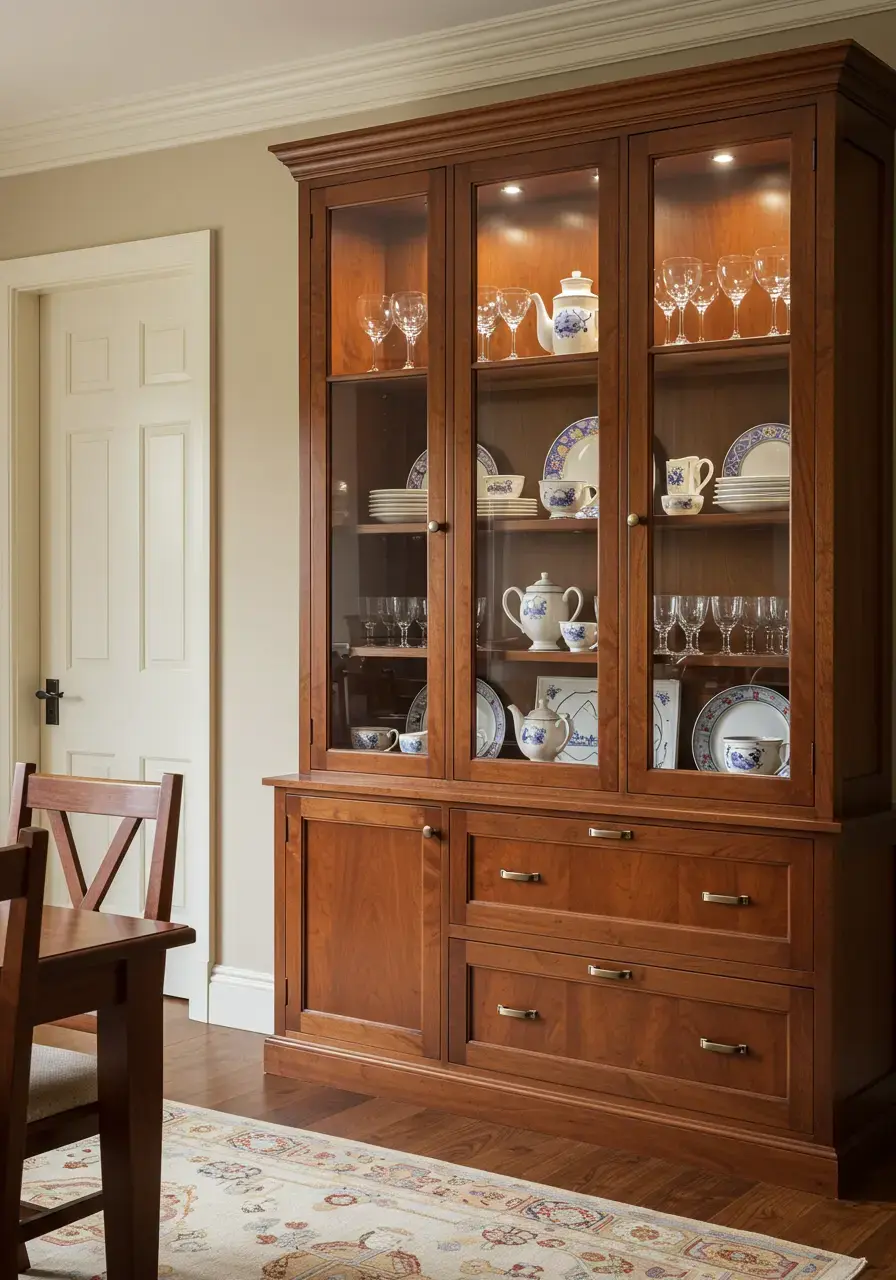
Why This Works:
A built-in china cabinet offers extensive storage and a sophisticated display area, adding significant architectural detail and value to the room.
How You Can Recreate It:
- Consult with a carpenter or cabinet maker to design a unit that fits your space and style.
- Include features like interior lighting to showcase your displayed items.
- Choose a wood finish and hardware that matches your furniture.
Layering textiles for tradition dining room
Layering textiles adds depth, warmth, and comfort to a traditional dining room. This includes things like upholstery on chairs, a beautiful rug, draperies on the windows, and even table linens. Mixing textures and patterns (carefully!) can create a rich and inviting feel. I love using velvet or damask on chairs and pairing it with a substantial rug.

Why This Works:
Layering textiles adds comfort, visual interest, and allows you to introduce texture, pattern, and color in a soft way.
How You Can Recreate It:
- Choose upholstery fabrics for your chairs that have a nice texture or subtle pattern.
- Select a substantial area rug with a traditional motif.
- Hang full-length drapes in a classic fabric to frame windows.
Creating a focal point in your space
Every great room needs a focal point, something that immediately draws your eye. In a traditional dining room, this could be a stunning chandelier, a fireplace, a large piece of art, or even a beautifully styled buffet with a mirror above it. It gives the room a sense of purpose and drama.

Why This Works:
A focal point creates visual interest, gives the eye a place to rest, and helps define the room’s primary feature.
How You Can Recreate It:
- Highlight a key architectural feature like a fireplace.
- Hang a large, impactful piece of art on a prominent wall.
- Make your chandelier a statement piece.
Arranging furniture for seamless flow
Arranging your furniture correctly is crucial for both aesthetics and function. In a traditional dining room, you want to ensure there’s enough space for people to move comfortably around the table and other pieces like a buffet or china cabinet. Think about the flow of traffic and how the space will be used during a formal gathering.
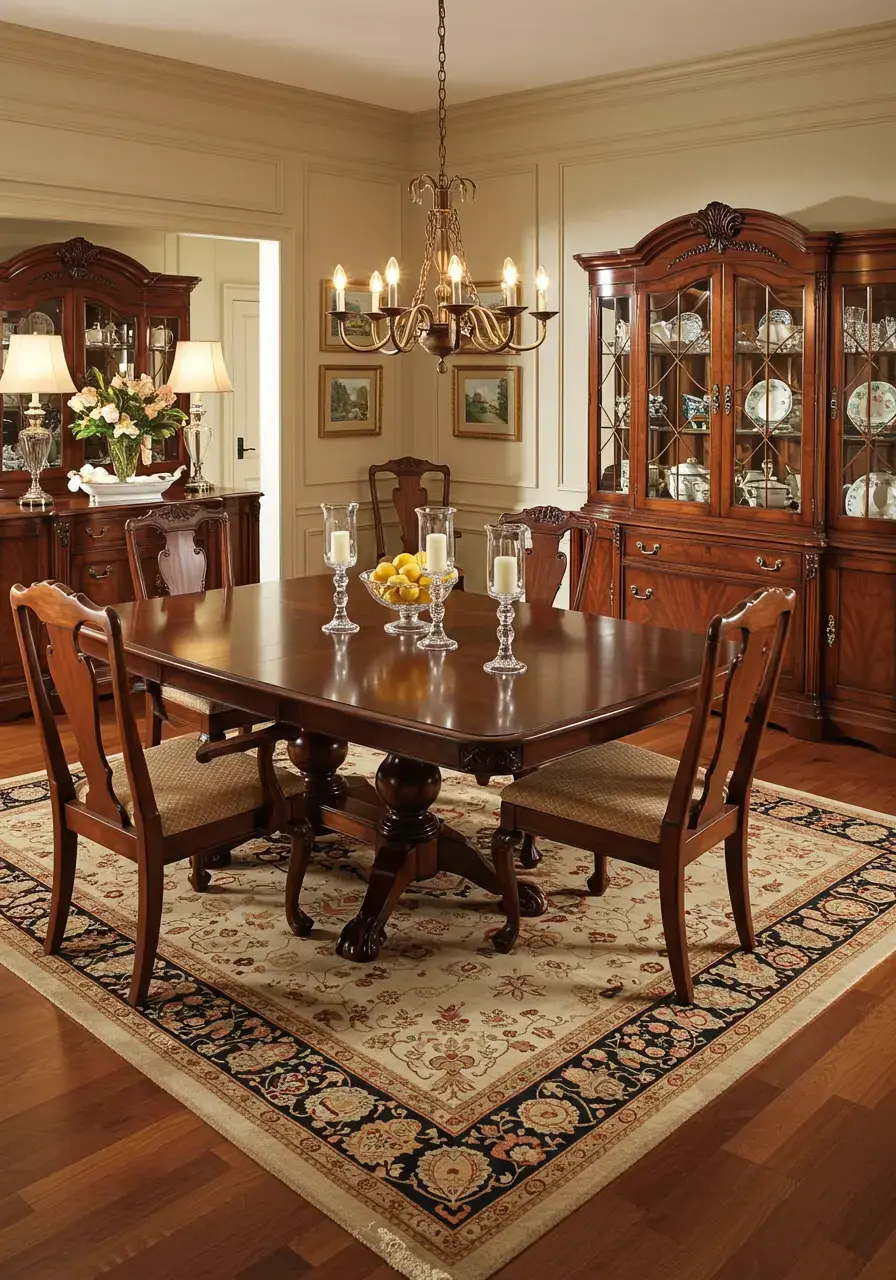
Why This Works:
Proper furniture arrangement ensures the room is functional and comfortable, allowing guests to move and interact easily.
How You Can Recreate It:
- Ensure there are at least 3 feet of space between the edge of the table and the walls or other furniture for chairs and walkway.
- Place the buffet or sideboard in an easily accessible location.
- Consider the view and how furniture is oriented towards any focal points.
Conclusion
Creating a traditional dining room that’s perfect for formal gatherings is truly a rewarding project. It’s about more than just filling a space with furniture; it’s about building a room that feels welcoming, elegant, and ready to host those special moments. By focusing on classic pieces, layered textures, and thoughtful details, you can achieve a timeless style that will serve you and your loved ones for years to come. I hope these 14 traditional dining room settings ideas give you a wonderful starting point for making your dining room the beautiful and functional heart of your home.

